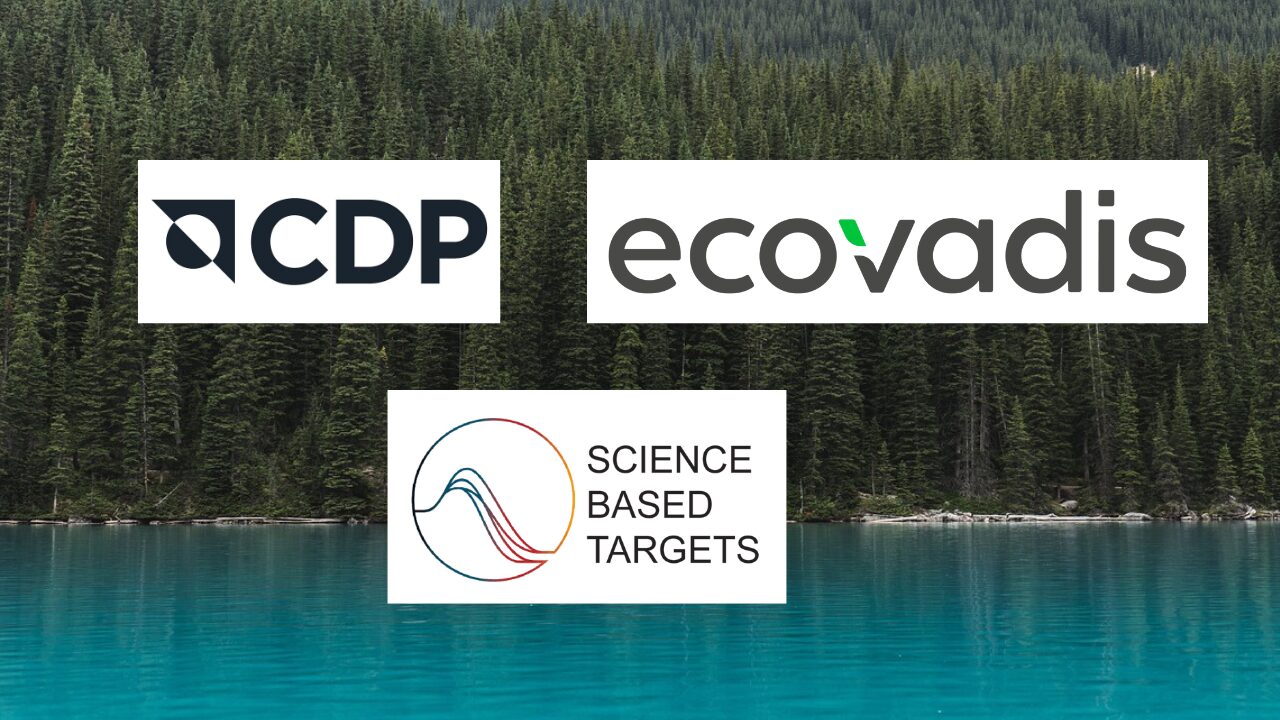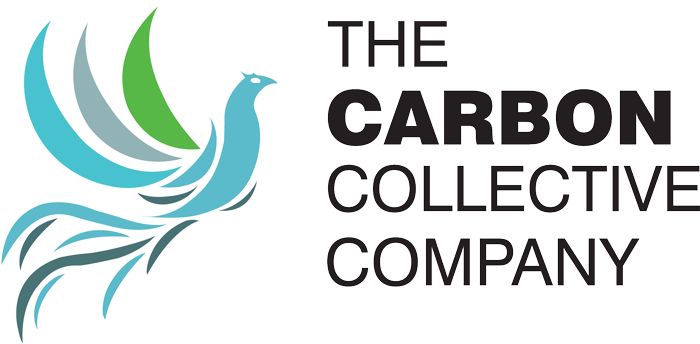Share:
Let’s talk about some of the critical components of a sustainability strategy. Sustainability has shifted from a “nice-to-have” to a board-level imperative. Investors, customers, and employees now expect hard facts on how a company manages its environmental, social, and governance (ESG) practices. Frameworks such as CDP, EcoVadis, and the Science Based Targets initiative (SBTi) turn those expectations into clear metrics and roadmaps, guiding businesses to track progress, close performance gaps, and stay in step with global climate ambitions. This blog will explain how these frameworks support companies and how your organisation can leverage them effectively.

To begin, here’s a brief overview of CDP, EcoVadis, and SBTi
CDP: Driving Environmental Transparency
CDP (formerly the Carbon Disclosure Project) is a global non-profit that runs the world’s leading environmental disclosure system. It focuses on climate change, water security, and deforestation, enabling companies to report their environmental impacts through detailed questionnaires. CDP’s scoring system provides a letter grade (A to D-) that reflects a company’s environmental performance, offering insights for investors, regulators, and other stakeholders.
CDP aligns with international standards like the Paris Agreement, helping companies track and reduce emissions, particularly Scope 1, 2, and 3. Its sector-specific questionnaires ensure relevance for high-impact industries, such as oil and gas or manufacturing, making it a vital tool for companies aiming to demonstrate climate leadership.
EcoVadis: Holistic ESG Assessment
EcoVadis is a leading sustainability ratings provider, assessing over 150,000 companies across 185 countries. Unlike CDP’s environmental focus, EcoVadis evaluates a broader range of ESG criteria, including environment, labor and human rights, ethics, and sustainable procurement. Its scorecards (rated Bronze to Platinum) provide actionable insights, helping companies identify gaps and improve performance.
EcoVadis is particularly valuable for supply chain management, as it’s used by over 1,300 global enterprises to assess suppliers. Its Carbon Action Module supports Scope 3 decarbonisation, making it a critical tool for companies navigating complex value chains. EcoVadis also aligns with regulations like the EU’s Corporate Sustainability Reporting Directive (CSRD), streamlining compliance.
SBTi: Science-Based Climate Action
The Science Based Targets initiative (SBTi) guides companies in setting greenhouse gas (GHG) emission reduction targets aligned with climate science and the Paris Agreement’s goal of limiting global warming to 1.5°C. SBTi’s rigorous validation process ensures targets are ambitious and credible. By 2023, over 4,000 companies had validated targets through SBTi, with sectors like manufacturing leading the way.
SBTi provides sector-specific guidance (e.g., for steel, cement, or agriculture) and requires companies to review targets every five years to stay aligned with the latest science. It’s a cornerstone for businesses committed to net-zero by 2050, offering a clear path to decarbonisation.
Real‑world results: See how one hospitality client used emissions baselining and an SBTi‑aligned roadmap to cut footprint while boosting brand value. Read more ➜
Streamlined Data Collection and Reporting
CDP, EcoVadis, and SBTi simplify sustainability reporting by providing structured frameworks. CDP’s Online Response System (ORS) collects environmental data through targeted questionnaires, while EcoVadis offers customized assessments based on a company’s size, industry, and location. Both platforms integrate with standards like GRI and ESRS, reducing duplicative reporting efforts.
SBTi complements these by focusing on target-setting and validation. Companies report emissions and progress through annual reports, sustainability reports, or CDP’s questionnaire, ensuring consistency across platforms. Leveraging existing data (e.g., utility bills, supplier codes, or emissions inventories) can streamline submissions.
Enhanced Supply Chain Transparency
For companies with complex supply chains, these frameworks are invaluable. CDP’s Supply Chain program encourages suppliers to report climate data and set SBTi-aligned targets, as seen with companies like Hewlett Packard Enterprise, which prioritises suppliers with validated targets. EcoVadis’ broad ESG focus helps procurement teams assess supplier risks across environmental, social, and ethical dimensions.
By reporting to both CDP and EcoVadis, companies can meet diverse customer requirements, as major buyers like Walmart and Unilever use both platforms to benchmark suppliers. This dual reporting enhances transparency and strengthens business relationships.
Competitive Advantage and Compliance
Reporting through these platforms positions companies as low-risk, future-proof partners. A high CDP score or an EcoVadis medal (e.g., Platinum, as achieved by The Carbon Collective Company) signals strong ESG performance, attracting sustainability-minded investors and customers. SBTi validation enhances credibility by demonstrating science-based climate commitments.
These frameworks also prepare companies for mandatory regulations like the CSRD,by aligning with global standards, businesses can stay ahead of compliance requirements and avoid penalties.
Actionable Insights for Improvement
Each platform provides tools to drive performance. CDP’s scores highlight gaps in environmental management, while EcoVadis’ scorecards offer detailed recommendations across ESG categories. SBTi’s validation process ensures targets are ambitious yet achievable, with guidance for sectors like finance or agriculture. Companies can use these insights to optimize operations, reduce emissions, and uncover efficiencies (e.g., cutting energy waste or streamlining logistics).
These frameworks also prepare companies for mandatory regulations like the CSRD,by aligning with global standards, businesses can stay ahead of compliance requirements and avoid penalties.
Can you work on all three simultaneously?
Working on CDP disclosure, EcoVadis scoring and SBTi target-setting in parallel is not only feasible, it can actually save time and strengthen each result. See below:
- SBTi → CDP: a validated SBTi target can move you from a B/B- to an A/A- score because Leadership points hinge on science-based ambition.
- CDP → EcoVadis: the environmental data and reduction results you disclose to CDP make up the bulk of EcoVadis’ Environment theme; strong CDP performance therefore improves the EcoVadis sub-score automatically.
- EcoVadis → CDP: while EcoVadis itself is not recognised in CDP scoring, its documentation package (policies, certificates, supplier screening records) can be attached directly as evidence files in the CDP portal, speeding up completion. EcoVadis’ new Carbon Data Network also gives primary Scope 3 data that strengthen future CDP submissions.
Best Practices for Successful Reporting
- Start Early: CDP’s reporting window is mid-June to mid-September, while EcoVadis typically allows 30 business days. Plan ahead to avoid rushed submissions.
- Conduct a Gap Analysis: Identify weaknesses in your ESG data or processes. EcoVadis users can improve scores by addressing gaps in sustainable procurement or labor practices.
- Leverage Technology: Use ESG software or consultants to streamline data collection and ensure accuracy. Tools like EcoVadis’ Carbon Action Module or Greenplaces’ platform simplify emissions calculations.
- Engage Cross-Functional Teams: Form a task force with operations, procurement, and sustainability experts to gather comprehensive data, from utility bills to supplier policies.
- Align with SBTi: Set science-based targets to enhance your CDP and EcoVadis scores, as both platforms reward SBTi-aligned commitments.
Why It Matters
Reporting through CDP, EcoVadis, and SBTi isn’t just about compliance—it’s about building resilience, reducing risks, and seizing opportunities. Robust disclosure can uncover cost-saving efficiencies, strengthen stakeholder trust, and position your company as a sustainability leader. As global regulations tighten and customer expectations rise, mastering these frameworks is essential for staying competitive in a sustainability-driven market.
Want to find out more? Contact Gokul Shekar (Head of ESG and Climate Change) and he’ll be happy to help: [email protected]
Need hands‑on help navigating CDP, EcoVadis, or setting science‑based targets?
Popular Reads


A guide to CDP reporting for 2025









